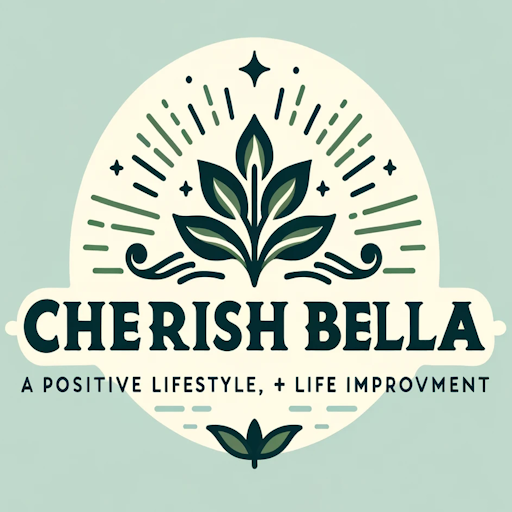Guided self-help exercises provide practical tools for emotional healing, enabling us to address and process our feelings in a structured manner. By engaging in these exercises, we open pathways to self-awareness and personal growth. Understanding and applying these techniques can significantly improve our emotional well-being.
We explore various methods ranging from cognitive techniques to somatic exercises, each aiming to help us regulate our emotions. By incorporating these practices into our daily routine, we can foster healthier relationships and set important boundaries. Discovering these tools can transform our approach to mental health.
Navigating our emotional landscape with guided self-help can also enhance our self-image and outlook on life. With consistent practice, we become more resilient and capable of handling life’s challenges. These exercises empower us to take control of our emotional health.
Key Takeaways
- Guided self-help exercises improve emotional well-being.
- Techniques range from cognitive to somatic practices.
- Regular practice enhances resilience and mental health.
Understanding the Basics of Emotional Healing

Emotional healing is a multifaceted process that involves the intricate interplay of the mind, body, and nervous system. To fully comprehend it, we must explore how our physical state influences our mental health and how past experiences shape our present emotional wellbeing.
The Mind-Body Connection
The mind and body are deeply interconnected. Our physical health can significantly impact our emotional state, and vice versa. Studies show that regular exercise can reduce symptoms of anxiety and depression by releasing endorphins and improving mood.
Conversely, chronic stress can lead to physical ailments, such as high blood pressure and digestive issues. Ensuring a holistic approach to health involves acknowledging this connection and addressing both physical and mental health aspects.
The Role of the Nervous System
The nervous system plays a crucial role in emotional healing. It governs our response to stress and our ability to relax and recuperate. The autonomic nervous system, which includes the sympathetic and parasympathetic systems, regulates these responses.
When we experience stress, the sympathetic nervous system activates the ‘fight or flight’ response. For healing, activating the parasympathetic nervous system, which promotes ‘rest and digest’, is essential. Techniques like mindfulness, yoga, and deep breathing exercises can help in this activation, aiding in emotional recovery.
Trauma and Its Impact on Mental Health
Trauma has profound effects on mental health and emotional wellbeing. It can result from various experiences, including abuse, accidents, or loss. Trauma can cause long-term psychological and physical symptoms, such as flashbacks, anxiety, and even chronic pain.
Addressing trauma requires a sensitive and supportive approach. Interventions like therapy, support groups, and self-help exercises can be effective. Our goal is to create a safe space for healing, allowing individuals to process and release the emotional pain associated with their trauma.
Techniques for Self-Help and Regulation
We will explore methods to foster emotional healing by gaining control over our minds and body. These activities serve as valuable resources to help us regulate emotions and cultivate mindfulness.
Grounding Techniques and Body Scans
Grounding techniques help us stay present. We focus on our physical surroundings or sensations. A common method is the 5-4-3-2-1 exercise, which involves listing things we can see, touch, hear, smell, and taste.
Body scans are another effective technique. We mentally scan our body from head to toe, noticing any tension and releasing it. This practice helps us reconnect with our physical self and promote self-regulation.
Both methods are simple yet effective ways of grounding ourselves and regaining control over scattered thoughts.
Resourcing and Crafting a Safe Place
Resourcing involves identifying and utilising personal strengths and supportive resources. This can include hobbies, supportive relationships, or memories. It empowers us to face and overcome challenges by drawing on our inner strengths and external supports.
Crafting a safe place in our mind through visualisation techniques helps create a tranquil mental retreat. We imagine a comforting environment, filled with sights, sounds, and smells that evoke a sense of safety.
These practices provide effective tools for emotional self-regulation and managing stress.
Meditation and Mindfulness Practices
Meditation and mindfulness practices are essential for developing self-awareness and control. Techniques such as focused attention, mindful breathing, and loving-kindness meditations help us stay present and foster a sense of inner peace.
Mindfulness encourages us to observe our thoughts and emotions without judgment. This helps in understanding our mental patterns and promoting emotional regulation.
By regularly practising these techniques, we can develop a resilient mindset and achieve a more balanced emotional state.
Somatic Therapy and Its Exercises
Somatic therapy focuses on relieving physical symptoms related to trauma. By incorporating body-focused exercises and movement, it can pave the way for emotional release and healing.
Somatic Experiencing and Trauma Recovery
Somatic experiencing is a therapeutic approach designed to address the physical symptoms of trauma. It involves noticing physical sensations in the body and releasing stored tension. We often engage clients in exercises such as body scans or grounding techniques to help them stay present and reduce stress.
These methods can be particularly effective for trauma recovery. When we work with clients, we guide them to explore how trauma affects their bodies, promoting a sense of control and safety. This makes it a key component of our approach to healing emotional wounds through somatic means.
Body-Focused Approaches for Healing
Body-focused approaches in somatic therapy aim to connect physical and emotional health. Techniques such as breathwork and progressive muscle relaxation are used to address chronic stress and trauma symptoms. These exercises help us observe how stress manifests physically and work towards releasing it.
For instance, we might use body awareness exercises to increase mindfulness and reduce reactivity. This can foster a deeper understanding of how emotions are stored in the body, aiding in the healing process and contributing to overall wellbeing.
Integrating Movement with Emotional Release
Movement can play a crucial role in somatic therapy. By incorporating activities like yoga, dance, or other forms of physical expression, emotional release is facilitated. Movement allows us to process and express emotions that may be difficult to verbalise.
In our practice, we often recommend simple yet effective movements tailored to each individual’s needs. These might include gentle stretches or specific poses that encourage a flow of energy and emotional release. Integrating movement into therapy helps bridge the gap between the mind and body, promoting holistic healing.
Navigating Relationships and Setting Boundaries
Creating healthy relationships and establishing clear boundaries are essential for our emotional wellbeing. Effective communication with our loved ones can provide deep emotional healing and safety.
Establishing Boundaries for Emotional Safety
Setting boundaries is crucial to protect our emotional health. We must identify our limits and clearly communicate them to others. This might involve saying no to certain requests or expressing discomfort when conversations become too intrusive.
Boundaries help us manage our time and emotional energy. When we establish what is acceptable behaviour from others, we create a safe space for ourselves. It’s important to remain consistent with these boundaries, even when challenged.
Understanding our emotions and recognising when we feel overwhelmed indicate when a boundary is needed. Writing down our boundaries and revisiting them regularly can reinforce their importance. Consistency and clarity are key in maintaining these boundaries.
The Healing Power of Communication and Connections
Open and honest communication with our loved ones can significantly improve our emotional wellbeing. Sharing our feelings and listening actively allows for a deeper connection. We should express our needs clearly without fear of judgement.
Listening is just as important as speaking. Acknowledging and validating each other’s emotions facilitates understanding and support. Creating a space where everyone feels heard and valued strengthens the relationship.
Regular check-ins with those we care about can maintain a strong emotional bond. This consistent communication helps navigate conflicts and reinforces trust. Empathy and respect during conversations are vital to fostering a supportive environment. Clear, open dialogue can lead to profound emotional healing.
Cultivating a Positive Self-Image and Life Outlook
Improving the way we perceive ourselves and our life can dramatically enhance our emotional well-being. By focusing on self-compassion, resilience, and gratitude, we can foster a more positive outlook and increased self-esteem.
Building Self-Compassion and Self-Esteem
Self-compassion involves treating ourselves with kindness, especially during times of failure or stress. By recognising our own strengths and understanding our limitations, we can build a stronger foundation for self-esteem.
One way to practice self-compassion is to speak to ourselves as we would to a friend. When we make mistakes, instead of self-criticism, we should offer encouragement and understanding. This helps us realise that errors are a part of learning and growing.
Setting achievable goals and celebrating small victories also boosts self-esteem. Every success, no matter how minor, builds our confidence and reassures us of our capabilities. Reflecting on these successes can create a reservoir of positive memories to draw upon during challenging times.
Developing Resilience and Gratitude
Resilience allows us to bounce back from adversity and challenges. Building resilience involves strengthening our coping strategies and maintaining a positive mindset. One effective method is to focus on our strengths and past successes, reminding ourselves of what we’ve overcome before.
Practising gratitude can improve our overall well-being. By regularly acknowledging the positives in our lives, we shift our focus from what’s lacking to what’s abundant. Keeping a gratitude journal, where we write down things we are thankful for, cultivates a habit of appreciation.
Aligning our actions with our values also enhances resilience. When we prioritise goals that reflect our core values, it becomes easier to stay motivated and perseverant, even in the face of setbacks. This alignment provides a clear purpose and direction, aiding in emotional healing.

